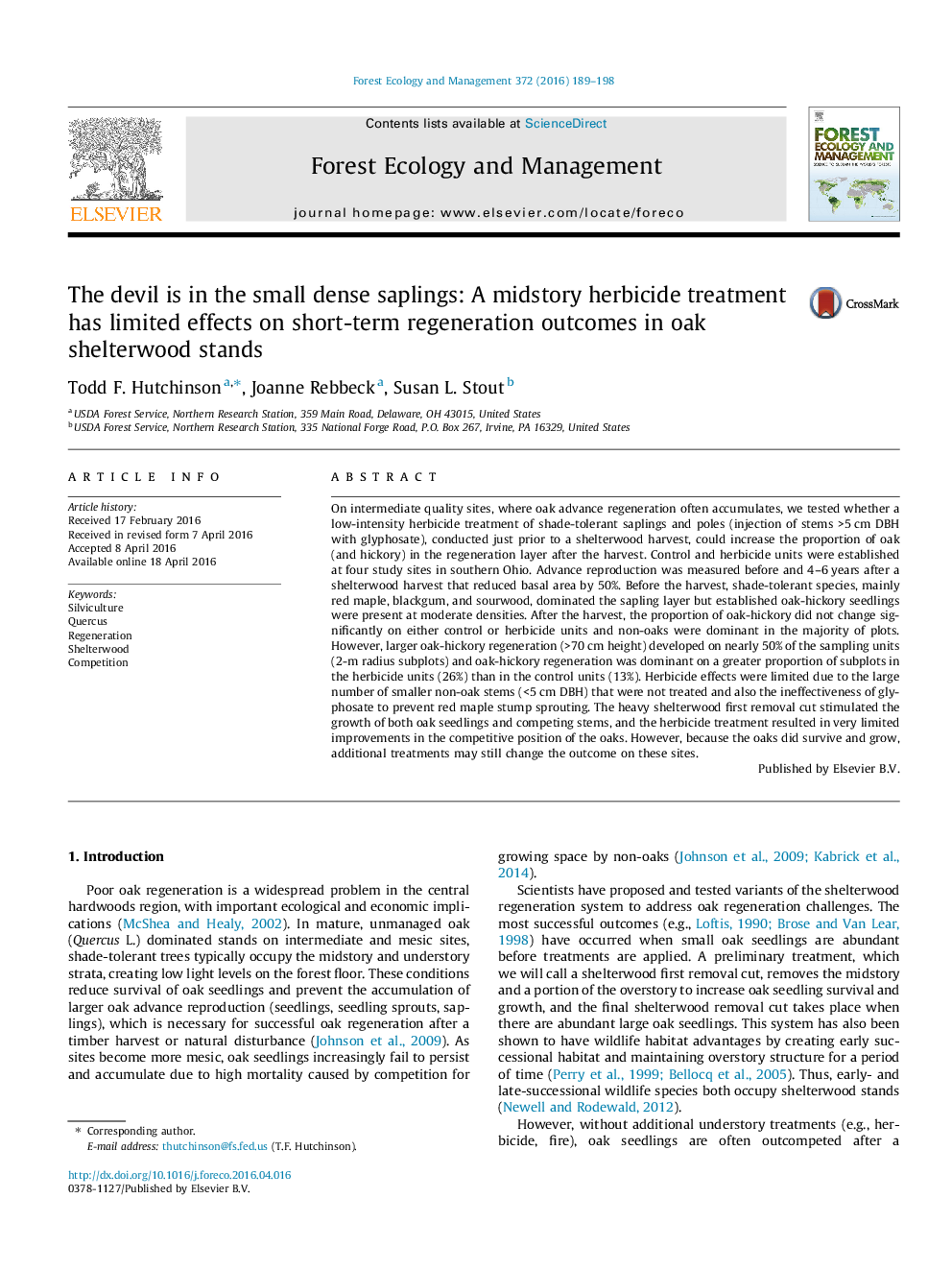| کد مقاله | کد نشریه | سال انتشار | مقاله انگلیسی | نسخه تمام متن |
|---|---|---|---|---|
| 6542301 | 159151 | 2016 | 10 صفحه PDF | دانلود رایگان |
عنوان انگلیسی مقاله ISI
The devil is in the small dense saplings: A midstory herbicide treatment has limited effects on short-term regeneration outcomes in oak shelterwood stands
ترجمه فارسی عنوان
شیطان در نهالهای متراکم کوچک قرار دارد: یک درمان علف کش متوسط، تأثیر محدودی بر پیامدهای بازتوزیعی کوتاه مدت در پایه های بلوط دارد
دانلود مقاله + سفارش ترجمه
دانلود مقاله ISI انگلیسی
رایگان برای ایرانیان
موضوعات مرتبط
علوم زیستی و بیوفناوری
علوم کشاورزی و بیولوژیک
بوم شناسی، تکامل، رفتار و سامانه شناسی
چکیده انگلیسی
On intermediate quality sites, where oak advance regeneration often accumulates, we tested whether a low-intensity herbicide treatment of shade-tolerant saplings and poles (injection of stems >5Â cm DBH with glyphosate), conducted just prior to a shelterwood harvest, could increase the proportion of oak (and hickory) in the regeneration layer after the harvest. Control and herbicide units were established at four study sites in southern Ohio. Advance reproduction was measured before and 4-6Â years after a shelterwood harvest that reduced basal area by 50%. Before the harvest, shade-tolerant species, mainly red maple, blackgum, and sourwood, dominated the sapling layer but established oak-hickory seedlings were present at moderate densities. After the harvest, the proportion of oak-hickory did not change significantly on either control or herbicide units and non-oaks were dominant in the majority of plots. However, larger oak-hickory regeneration (>70Â cm height) developed on nearly 50% of the sampling units (2-m radius subplots) and oak-hickory regeneration was dominant on a greater proportion of subplots in the herbicide units (26%) than in the control units (13%). Herbicide effects were limited due to the large number of smaller non-oak stems (<5Â cm DBH) that were not treated and also the ineffectiveness of glyphosate to prevent red maple stump sprouting. The heavy shelterwood first removal cut stimulated the growth of both oak seedlings and competing stems, and the herbicide treatment resulted in very limited improvements in the competitive position of the oaks. However, because the oaks did survive and grow, additional treatments may still change the outcome on these sites.
ناشر
Database: Elsevier - ScienceDirect (ساینس دایرکت)
Journal: Forest Ecology and Management - Volume 372, 15 July 2016, Pages 189-198
Journal: Forest Ecology and Management - Volume 372, 15 July 2016, Pages 189-198
نویسندگان
Todd F. Hutchinson, Joanne Rebbeck, Susan L. Stout,
